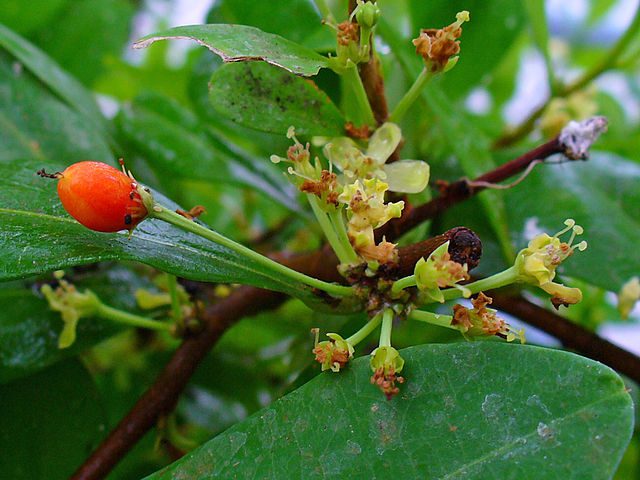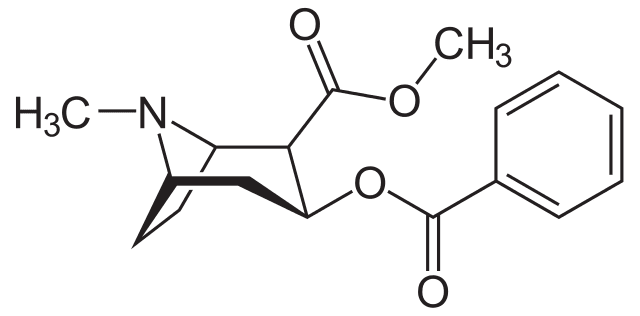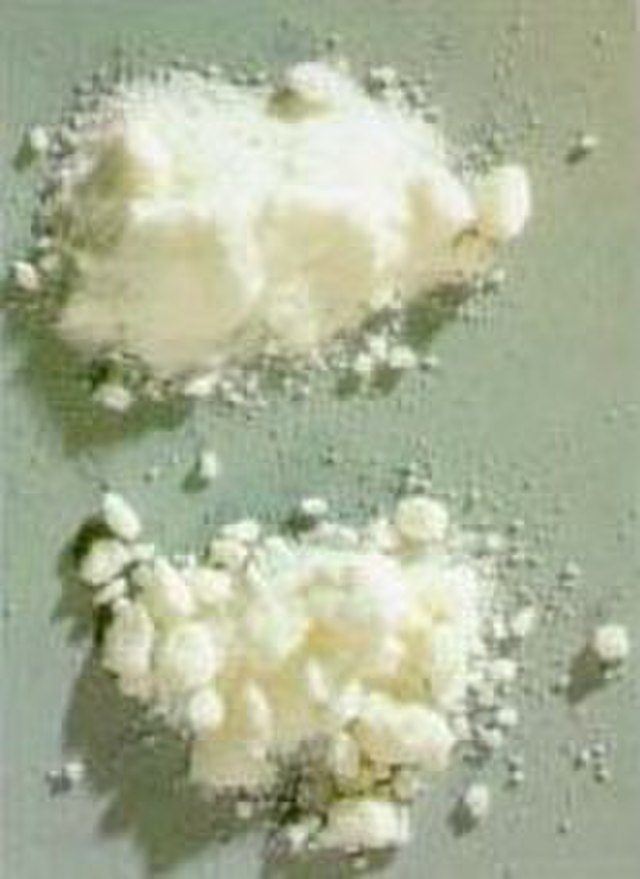
Amapolaa en polvo (cocaine)-by Davidfernandocoronel-Wikimedia Commons
15 Facts About Cocaine
Cocaine sometimes referred to as coke or crack when it is in its free base form, is a highly addictive stimulant that is derived from the leaves of the Erythroxylon coca bush in South America. Although it can be used by medical professionals for legitimate medical reasons, such as local anesthetic during specific surgeries, recreational cocaine usage is prohibited. When consumed, the substance has immediate effects on the parts of the brain that control mood, survival instinct, and pleasure. It predominantly affects the body’s central nervous system. Most commonly used for recreational purposes, cocaine can be snorted, smoked, or injected to produce its potent effects.
Cocaine appears like a fine, white, crystal-like powder on the street. To boost revenues, street vendors frequently combine it with ingredients like cornstarch, talc, or flour. Also, they might combine it with other substances like the stimulant amphetamine or synthetic opioids like fentanyl. It is particularly harmful to add synthetic opioids to cocaine when users are unaware of its presence. This altered cocaine may contribute to the rising number of overdose deaths among cocaine users. Here are some facts about cocaine.
1. Cocaine is derived from the leaves of the South American native coca plant

Erythroxylum coca 001-by H. Zell-Wikimedia Commons
Erythroxylum coca and E. novogranatense, two native Coca species from South America, are the main sources of cocaine. These medicinal plants have a history of use among native Americans and naturally contain cocaine.
2. Dopamine levels rise in brain regions when cocaine is consumed
Cocaine’s neurochemical effects on the brain are what give it its pleasurable effects. Cocaine penetrates the blood-brain barrier by passively diffusing across cell membranes and (to a lesser extent) by a proton-coupled organic cation antiporter. It inhibits the reuptake of dopamine from the synaptic cleft into the pre-synaptic axon terminal by blocking the dopamine transporter. This causes the post-synaptic neuron to become euphoric and arousal-inducing due to increased dopamine receptor activation.
Moreover, cocaine inhibits the reuptake of serotonin and norepinephrine into the pre-synaptic axon terminal and increases the activation of serotonin receptors and norepinephrine receptors in the post-synaptic neuron, which all contribute to the mental and physical effects of cocaine exposure.
3. Crack cocaine was created as a result of its popularity

Crack-cocaine-2-grams-by Argv0-Wikimedia Commons
Cocaine overexposure led to the development of the crack strain of the drug. In the 1980s and 1990s, when celebrities and socialites could buy it from drug lords, it experienced a surge in popularity. Chemists began producing a less expensive product that became even more well-known and addictive due to the rise in demand.
4. Everyone can develop a cocaine addiction
Cocaine has no preference, just like any other substance. According to reports, one out of every four Americans between the ages of 26 and 34 has used cocaine at some point in their lives. You can become hooked to it in one of its several forms whether you’re rich, middle-class, or below the poverty line. A first-time user can quickly develop an addiction since many individuals misunderstand its effects.
5. The drug is either snorted, applied topically to the lips, or dissolved and injected into a vein

Sniffing cocaine by kalhh-Pixabay
The substance is administered by snorting, applying topically to the mouth, dissolving, or injecting it into a vein after being extracted from the plant and subsequently processed into cocaine hydrochloride (powdered cocaine). Moreover, it can be converted into free base form (crack cocaine), where the vapors can be ingested after being heated till sublimation.
6. Cocaine use comes with severe health hazards
Cocaine addicts who refrain from the substance go through cocaine craving and withdrawal, as well as sadness, a drop in libido, a loss of the ability to perceive pleasure, and exhaustion. Cocaine usage raises the chance of death overall, and intravenous use raises the risk of injury and infectious diseases including HIV and blood infections. Moreover, it raises the risk of sudden cardiac death, lung damage from smoking, heart attack, stroke, and cardiac arrhythmia. Cocaine that is sold illegally is frequently contaminated with fentanyl, local anesthetics, levamisole, cornstarch, quinine, or sugar, all of which can increase toxicity. According to the Global Burden of Disease report from 2017, about 7,300 people die yearly from cocaine consumption.
Read also; Demystifying Depression: 15 Facts about Depression
7. The Coca plant has been used as a narcotic for more than 5000 years

Erythroxylum coca 004-by H. Zell-Wikimedia Commons
Since prehistoric times, Andean civilizations have consumed coca leaves. The effects of cold, hunger, and altitude sickness have traditionally been treated with coca leaves, which are chewed, taken orally in the form of a tea, or alternatively, prepared in a sachet wrapped around alkaline burnt ashes and held in the mouth against the inner cheek. This remedy has persisted through modern successor indigenous cultures of the Andes mountains.
The leaves were first solely consumed as a part of religious rituals, but after the arrival of the Spaniards, everything changed. Although the plant is a stimulant that produces strong feelings of enhanced energy, the Spaniards rapidly discovered that making their captives consume it increased the productivity of slaves working in the silver mines.
8. Coca-Cola once had cocaine as one of its constituents
At the end of the 19th century, cocaine was being utilized as a novel beverage rapidly spreading across the United States. More than 1.9 billion cans of that beverage are sold each day, making it the fourth most popular beverage in the world behind water, tea, and coffee. It was given the name of its most well-known constituent Coca-Cola. Today’s recipe does not contain cocaine, but it is still unhealthy for you.
9. In the United States, cocaine is the second-most popular illicit drug

United States v. United States. Joaquin Guzman Loera, Memorandum of Law in Support of Pretrial Detention, Exh. 3-by U.S. Department of Justice-Wikimedia Commons
Cocaine remains the second-most consumed illicit narcotic in the United States, despite a slight decline from its peak in the late 1980s. Unrelenting drug cartels from Bolivia, Mexico, Colombia, and other Latin American nations where the Coca plant is grown continue to come up with innovative ways to meet America’s demand for the drug. They frequently employ terror and violence to maintain control over the supply chain and grow their power.
Read also; 20 Most Famous Gangsters of All Time
10. Cocaine is an addictive substance with some anesthetic use in medicine
In conjunction with nose, mouth, throat, or lacrimal duct surgery, topical cocaine is occasionally used as a local anesthetic and vasoconstrictor to help manage discomfort and bleeding. The use of cocaine as a topical anesthetic and vasoconstrictor is typically safe, seldom producing cardiovascular damage, glaucoma, and pupil dilatation, despite the possibility of some absorption and systemic effects.
The ester local anesthetic cocaine hydrochloride (Goprelto), which is indicated for the introduction of local anesthesia of the mucous membranes for diagnostic procedures and surgeries on or through the adult nasal cavities, was licensed for medical use in the United States in December 2017. In January 2020, the United States granted medical approval for the benefit of cocaine hydrochloride (Numbrino).
11. Certain Andean countries permit the usage of coca leaves

Women gathering leaves of the coca plant (Erythroxylum coca) Wellcome V0043210-by Unknown-Wikimedia Commons
In some Andean countries, like Peru and Bolivia, chewing Coca leaves, drinking them as tea, or even incorporating them into food products is permitted. Coca leaves are often chewed into a wad, maintained in the buccal pouch (mouth between gum and cheek, similar to how chewing tobacco is eaten), and then the juices are sucked out of them. When the juices are swallowed, the gastrointestinal tract and the mucous membrane of the inner cheek progressively absorb the fluids. Coca leaves can also be infused with liquid and drunk like tea as an alternative. Coca tea, an infusion of coca leaves, is another conventional beverage. In order to avoid altitude sickness, tea has frequently been advised to travelers in the Andes.
12. Researchers are trying therapies used to treat other problems to treat cocaine addiction
Therapy with contingency management, such as issuing vouchers for retail items contingent on objectively-verified abstinence from recent drug use, has been proven in randomized clinical trials to considerably lower the likelihood of a positive test for the presence of cocaine. Also, TA-CD is an active vaccination created by the Xenova Group that is designed to counteract the effects of cocaine, making it appropriate for use in addiction therapy. It is made by mixing norcocaine and inactivated cholera toxin.
13. The cocaine alkaloid was not isolated until 1855

Kokain – Cocaine-by Neurotic-Wikimedia Commons
Although the stimulant and appetite suppressant effects of coca had been known for generations, it was not until 1855 that the cocaine alkaloid was isolated. Several European scientists had attempted to isolate cocaine, but none had been successful for two reasons: the chemistry knowledge required at the time was insufficient, and current conditions of sea shipping from South America could degrade the cocaine in the plant samples available to European chemists. Friedrich Gaedcke, a German scientist, was the first to isolate cocaine alkaloids in 1855.
14. In most nations, the production, distribution, and sale of cocaine is restricted
The production, distribution, and sale of cocaine products is prohibited (and illegal in most cases) in most countries, as governed by the Single Convention on Narcotic Drugs and the United Nations Convention Against Illicit Trade in Narcotic Drugs and Psychotropic Substances. Some countries, such as Peru and Bolivia, allow coca leaf cultivation for traditional consumption by the indigenous people but prohibit the production, sale, and consumption of cocaine. Laws such as the Bolivian Cato agreement safeguard the regulations governing how much a coca farmer can harvest annually. Furthermore, several countries in Europe, the United States, and Australia only permit the use of processed cocaine for therapeutic purposes.
15. Western and Central Europe are reported to contain the world’s second-largest cocaine consumer market, after North America

The legal status of cocaine possession-by Lidistat67-Wikimedia Commons
As of 2000, global annual cocaine consumption was around 600 tonnes, with the United States consuming roughly 300 t or 50% of the total, Europe consuming about 150 t or 25% of the whole, and the rest of the world consuming the remaining 150 t or 25%. In 2010, 1.5 million people in the United States were estimated to have taken cocaine, down from 2.4 million in 2006. Cocaine use, on the other hand, appears to be on the rise in Europe, with the largest prevalence in Spain, the United Kingdom, Italy, and Ireland.
Read also; 10 Most Notorious Canadian Mafia
Planning a trip to Paris ? Get ready !
These are Amazon’s best-selling travel products that you may need for coming to Paris.
Bookstore
- The best travel book : Rick Steves – Paris 2023 – Learn more here
- Fodor’s Paris 2024 – Learn more here
Travel Gear
- Venture Pal Lightweight Backpack – Learn more here
- Samsonite Winfield 2 28″ Luggage – Learn more here
- Swig Savvy’s Stainless Steel Insulated Water Bottle – Learn more here
Check Amazon’s best-seller list for the most popular travel accessories. We sometimes read this list just to find out what new travel products people are buying.









